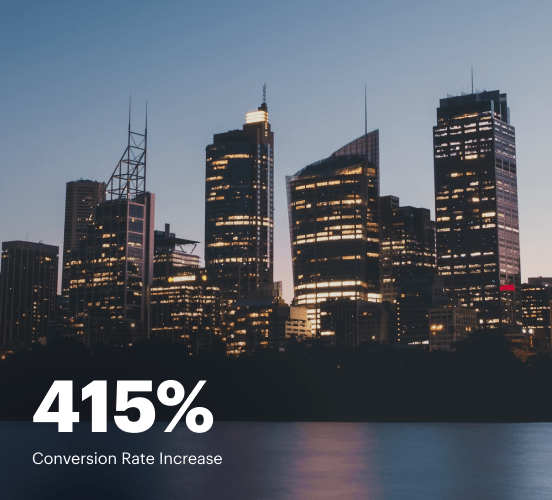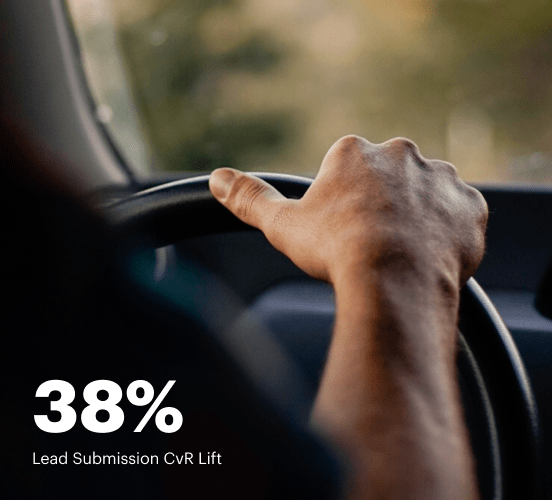How Pardot vs. PageFly vs. Instapage stack up against each other
Compare Instapage with Pardot and PageFly to create high-converting landing pages. With personalization, optimization, and collaboration tools, Instapage helps you deliver experiences that drive results.
Get startedSee how Instapage stacks up against the competition
| Feature | Instapage | Other builders |
| Drag-and-Drop Tools | ||
| Conversion-optimized templates | ||
| Manual and AI-powered A/B Tests | ||
| AI content suggestions | ||
| Popups and sticky bars | ||
| Canvas and grid blocks | ||
| Reusable and global elements | ||
| Form and popup builders | ||
| Built-in Heatmaps | ||
| Central analytics dashboard | ||
| Ad-to-page personalization and collections | ||
| Contacts, lists, and email | ||
| Dedicated, full-service CRO experts | ||
| Enterprise-ready platform |
Leading the way in building high-performing landing pages





Why Instapage is the smarter choice for your campaigns
Get everything you need to build, scale, and optimize high-converting landing pages—without coding.

Easier page building without coding
Instapage offers a flexible and seamless page creation experience with a library of 500+ conversion-focused layouts, Instablocks®, a drag-and-drop builder, and AI content generation. With technologies like Thor Render Engine®, you can create on-brand, mobile-responsive landing pages that load quickly and start converting during initial visitor clicks.

More insights — better results
Instapage lets you see in detail how each landing page experience and variation is performing so you can make targeted changes that boost page conversions. Use heatmaps for a better understanding of on-page activities, run A/B tests and AI-assisted experiments, and then track and evaluate results within robust analytics dashboards.

More personalized experiences
Instapage lets you quickly create high-performing landing pages tailored to each of your ad campaigns. Deliver personalized experiences for distinct audiences using dynamic text replacement. Effortlessly align specific advertisements to unique pages with AdMaps. Monitor audience-level metrics using our advanced data tools.

Built-in collaboration
Instapage collaboration capabilities bring your entire team together to speed up the process of landing page review, approval, and launch. No more frustrating and unnecessary revisions or edits scattered across emails. Provide instant feedback, conduct real-time page edits, and securely share your pages with outside stakeholders.

Free up time for your business
Invest time into business growth, not busy work. Launch landing pages faster with reusable forms and templates. Build once, reuse forever.
Explore all integrations






Easier page building without coding
Instapage offers a flexible and seamless page creation experience with a library of 500+ conversion-focused layouts, Instablocks®, a drag-and-drop builder, and AI content generation. With technologies like Thor Render Engine®, you can create on-brand, mobile-responsive landing pages that load quickly and start converting during initial visitor clicks.
More insights — better results
Instapage lets you see in detail how each landing page experience and variation is performing so you can make targeted changes that boost page conversions. Use heatmaps for a better understanding of on-page activities, run A/B tests and AI-assisted experiments, and then track and evaluate results within robust analytics dashboards.
More personalized experiences
Instapage lets you quickly create high-performing landing pages tailored to each of your ad campaigns. Deliver personalized experiences for distinct audiences using dynamic text replacement. Effortlessly align specific advertisements to unique pages with AdMaps. Monitor audience-level metrics using our advanced data tools.
Built-in collaboration
Instapage collaboration capabilities bring your entire team together to speed up the process of landing page review, approval, and launch. No more frustrating and unnecessary revisions or edits scattered across emails. Provide instant feedback, conduct real-time page edits, and securely share your pages with outside stakeholders.
Free up time for your business
Invest time into business growth, not busy work. Launch landing pages faster with reusable forms and templates. Build once, reuse forever.
Explore all integrationsGet started with Instapage in a few steps
-
Create your Instapage account
Start with Instapage by signing up via Google or your email. You'll get access to a free 14-day trial to discover Instapage capabilities. Feel free to cancel anytime during the 14-day trial if you decide that our product is not suitable for your business. -
Build and personalize your page
Create your first landing page from scratch or choose a template from 500+ customizable layouts. Use the drag-and-drop builder to add page elements, fonts, and backgrounds, refine content with AI, or add custom HTML, Javascript, and CSS. -
Review and make edits
Collaborate on page designs and streamline review processes. Invite your team members and stakeholders to review, edit, and provide feedback on your landing page. Collaborate knowing your page is confidential and only accessible to authorized users. -
Publish and track page performance
Publish your page to a domain or custom URL. Connect your pages to the ads you've created and track page performance within the analytics dashboard, run A/B tests and AI experiments, analyze results, and continuously optimize your landing page to maintain high conversions.
Instapage vs. Pardot vs. PageFly – The Battle for Best Landing Page Builder
Choosing a landing page builder is akin to assembling your dream team for a major superhero mission. Each contender brings something unique to the table while aiming for the same goal: effective lead generation and conversion optimization. This article will pit three of the most popular platforms—Instapage, Pardot, and PageFly—against each other in various rounds. By the end of this showdown, you'll not only appreciate the strengths and weaknesses of each but also understand which is best suited for your specific marketing needs. Join us in this quest, and by the time we reach the conclusion, you'll feel like a marketing superhero yourself, ready to make informed decisions. Let’s dive into the ring and see what each platform has to offer! (min:200 words, add the small paragraphs in this paragraph.)
Meet the Competitors: An Introduction to Our Tough Trio
In this corner, we have Instapage, a champion in conversion rate optimization with a user-friendly interface. Known for its powerful features and capabilities, it empowers marketers to reduce costs while delivering relevant landing page experiences that foster brand trust and customer loyalty. In another corner is Pardot, a marketing automation tool that combines landing page creation with robust lead management features, making it a go-to for B2B marketers. Finally, we have PageFly, a Shopify app that enables merchants to create customizable landing pages effortlessly, perfect for those looking to enhance their eCommerce game. Each of these platforms serves a distinct purpose and audience, and throughout this article, we will explore how they stand up against one another in several key areas. (min:200 words, add the small paragraphs in this paragraph.)
Round One - Features Showdown: Template and Usability Face-Off
Template Variety and User Experience - Who Comes Out on Top?
All three platforms boast a range of templates designed to cater to different marketing needs. Instapage offers an extensive library of high-converting templates, each fully customizable, meaning marketers can tailor pages specifically to target audiences. Its drag-and-drop functionality makes it easy for anyone, regardless of technical expertise, to create stunning landing pages. In comparison, Pardot presents a more structured approach. While it provides templates, the focus remains on integrating landing pages with broader marketing automation tasks, which might make its offerings feel less flexible for pure landing page design. PageFly, being an eCommerce-centric tool, offers a variety of templates for product pages, but its real strength lies in its customization options, allowing Shopify users to fully engage with the aesthetics and functionality of their pages. Overall, for marketers primarily focused on conversion optimization, Instapage stands out for its user-friendliness and robust template variety. (min:200 words, add the small paragraphs in this paragraph.)
Instapage: Premier Tool for Customization and Enhanced Conversion Rates
Instapage thrives on its unparalleled customization options and conversion optimization features. It acts as a trusted partner in your marketing endeavors, providing tools designed to boost conversion rates and limit wasted ad spend. With its Instablocks feature, users can save and reuse sections across different landing pages, enabling quicker setups and tighter branding. In addition, the platform offers A/B testing capabilities, allowing marketers to experiment with different versions of landing pages to determine what resonates best with their audience. Analytics and heatmaps provide insightful data to refine strategies and improve performance over time. The focus remains clear: Instapage strives to enhance the landing page experience, ensuring that each visitor feels valued and engaged. With these capabilities, it exudes confidence as a market leader in driving conversions. (min:200 words)
Round Two - Speed Test: Performance Matters
In the digital world, every second counts, and a slow-loading website can lead to lost conversions. Think of website speed as the barista at a busy coffee shop: if they take too long, customers might walk out frustrated. With that in mind, let’s evaluate how our three contenders perform in terms of speed. Instapage is built for optimized loading times, ensuring that users experience swift navigation and minimal wait times, which can significantly impact conversion rates. Pardot also strives for speed, but its performance can be hindered when too many features are working simultaneously. PageFly, while effective for its specialized eCommerce features, can occasionally experience delays, especially with complex pages, but generally offers decent performance. (min:200 words, add the small paragraphs in this paragraph.)
Instapage Speed Benefits:
- Designed for optimal page loading times.
- Utilizes adaptive loading to enhance performance.
- Offers lightweight templates that load quickly.
- Provides CDN (Content Delivery Network) support for faster delivery.
Pardot Speed Benefits:
- Good integration speeds with Salesforce for quick lead capture.
- Robust automation minimizes lag time in customer responses.
- Regular updates help maintain performance but may slow down with advanced features.
PageFly Speed Benefits:
- Fast loading times for product-focused pages.
- Effective caching mechanisms to reduce wait times.
- Generally performs well unless overloaded with complex elements.
- Streamlined for Shopify users aiming for rapid page setups.
In the realm of speed and performance, Instapage clearly holds an edge. Quick loading times translate into higher conversions, which is critical for any digital campaign. As observed, while each platform offers decent performance, Instapage stands out as the most reliable choice for marketers emphasizing speed. (min:200 words)
Round Three - Usability: The User Experience Journey
As we navigate this digital landscape, usability is crucial for success. Each platform aims to make the user experience as smooth as possible, though they employ different strategies. Instapage caters to both tech-savvy users and novices equally. Its intuitive interface guides users effortlessly while still offering advanced features for seasoned marketers. Interactive tutorials and an easy-to-use dashboard facilitate quick learning. Conversely, Pardot, with its multifaceted B2B automation features, may present a steeper learning curve, though it rewards diligent users with powerful insights. PageFly specifically targets Shopify merchants, and its onboarding is designed for those already familiar with Shopify's ecosystem. Overall, each platform strives to welcome users, albeit with varying levels of complexity. (min:200 words, add the small paragraphs in this paragraph.)
Round Four - The Support Team: Customer Care in Action
Customer support often serves as the unsung hero in navigating any platform. Instapage offers chat and email support, with responsive staff ready to assist users at various levels of expertise. Its extensive knowledge base and community forums foster an engaged user community. On the other hand, Pardot provides expertise primarily for enterprise-level users, offering phone support and dedicated account management to assist with complex issues. PageFly focuses on its Shopify integration, providing live chat and comprehensive documentation to help users quickly resolve queries. All three platforms show commitment to customer support, yet Instapage's accessible resources and responsive staff make it the most user-friendly option. (min:200 words, add the small paragraphs in this paragraph.)
Final Round - Pricing Strategies: Finding the Right Fit for You
Pricing can be a crucial deciding factor when choosing among these platforms. Instapage operates on a subscription basis, offering different tiers depending on user needs and features desired. While it may be seen as a premium option, its capabilities often justify the investment, particularly for those prioritizing conversions. Pardot uses a tiered pricing model that can become costly for smaller businesses, but it offers extensive features that suit larger B2B enterprises. PageFly adopts a more straightforward pricing strategy, primarily catering to Shopify users. It provides essential features at competitive prices, making it appealing to new eCommerce businesses. So, as we evaluate pricing structures, it's clear each platform has its strengths and weaknesses that align with various user needs. (min:200 words)
In conclusion, each platform has its dedicated strengths and weaknesses, shaping the ultimate decision based on individual business needs. For marketers who prioritize conversion rates and user experience, Instapage emerges as a frontrunner. However, Pardot can cater well to larger enterprises requiring lead management, while PageFly stands out in the eCommerce realm. Thus, knowing what you value most in a landing page builder—be it features, support, or pricing flexibility—will guide the best choice for you. We encourage you to take Instapage for a test drive and witness firsthand how it can enhance your marketing strategy. (min:200 words)










